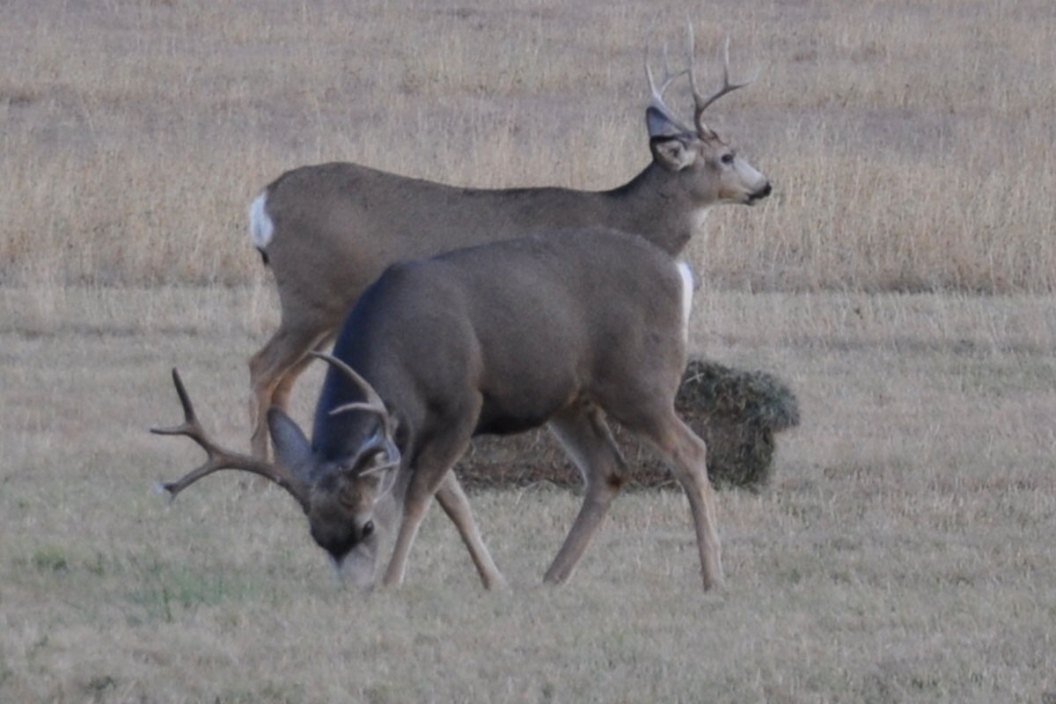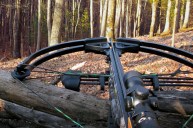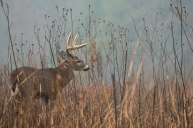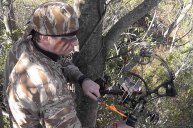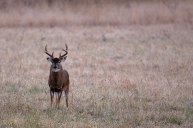As deer camp conversations begin to surge with the start of each season, there's a handful of topics that always seem to surface. How mature does a buck need to be to justify taking a shot? What's the best way to make venison? What caliber sits atop the hunting rifle power rankings? What's the most efficient way to clean a deer? Shoulder mount or Euro mount? Regardless of what hunters are debating, it seems something about the combination of cold beers and a healthy campfire seems fuel endless hot takes back by conviction. However, there's one question that tends to summon an especially wide variety of answers: What's the best shot placement for a quick, humane kill? There are a number of answers that carry a strong argument, but like anything else in hunting, people tend to stick to what has worked for them, and that's unlikely to ever change.
Today, we're going to highlight the most effective areas aim for, which can be different for gun and bowhunters. We'll address the pros and the cons of each, as every vital organ produces a different effect when hit, producing varying levels of spilled blood and meat loss.
Heart Shot
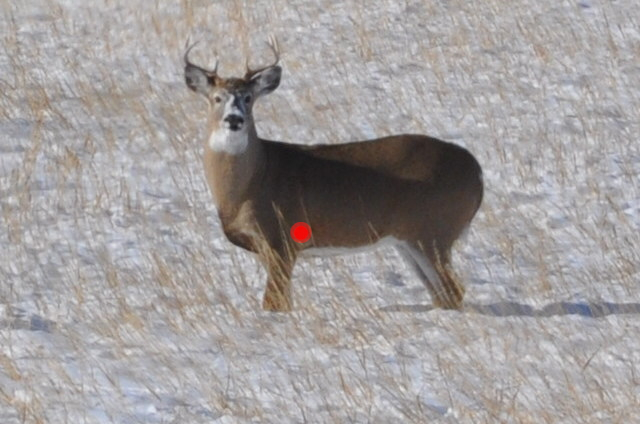
Travis Smola
Perhaps the most popular option among deer hunters nowadays, the heart shot is basically the bullseye on a deer, as it's a particularly small target, but perhaps the most fatal hit a deer can suffer. The beauty of the heart is its positioning within the vital organs, as it provides you with a forgiving margin of error. Regardless of whether you're hunting whitetail or mule deer, a well-placed shot can also hit the lungs or disrupt the circulatory system with by hitting an artery. To take a heart shot, you want to hit right behind the front shoulder, but just slightly low. The key to a successful heart shot, though, is the angle of the deer when you're ready to shoot. Ideally, you want one to stand broadside, but you can hit it while it's quartering, too, but it'll require a slightly steadier trigger finger.
Bowhunters should hold out for the broadside if possible, however, as you need a forgiving area in case you don't make the perfect shot with a bow, which is no small feat. Bowhunters frequently get too confident with a heart shot and hit shoulder or gut, so make sure you have everything working in your favor. But regardless of whether you're using a rifle or a bow, a well-placed heart shot almost always drops a deer with a single shot.
Lung Shot

Travis Smola
I myself am partial to the lung shot for a number of reasons, but my average shooting abilities are certainly the greatest concern. While I've done my fair share of shooting in my life and I'm no stranger around a rifle, I simply lack the proficiency to take a heart shot. The lungs, on the other hand, present a huge target area, creating an ideal kill zone for someone like me who doesn't feel comfortable shooting at heart-sized targets. And, they're wildly effective, killing deer with certainly so long as you're using an appropriate caliber for your quarry.
The only concern here, though, is the travel distance after the shot. It's best to stay put for a while to give them a chance to expire, but even then they could run anywhere from 30 to 200 yards, regardless of how much blood they're losing. However, if you're a halfway decent tracker, you shouldn't have a hard time finding a blood trail, and that well-placed shot will certainly make them drop at some point.
Bowhunters can be very effective by employing the lung shot, too, as it avoids the front leg and the should blade. It also opens up more angles since a quartering deer presents an even bigger lung area to aim for.
The lungs are a big target, and extremely effective way to harvest a deer, and they don't leave the animal suffering at all. You could lose some venison with either the lung shot or the heart shot, but it'll likely be fairly minimal.
High Shoulder
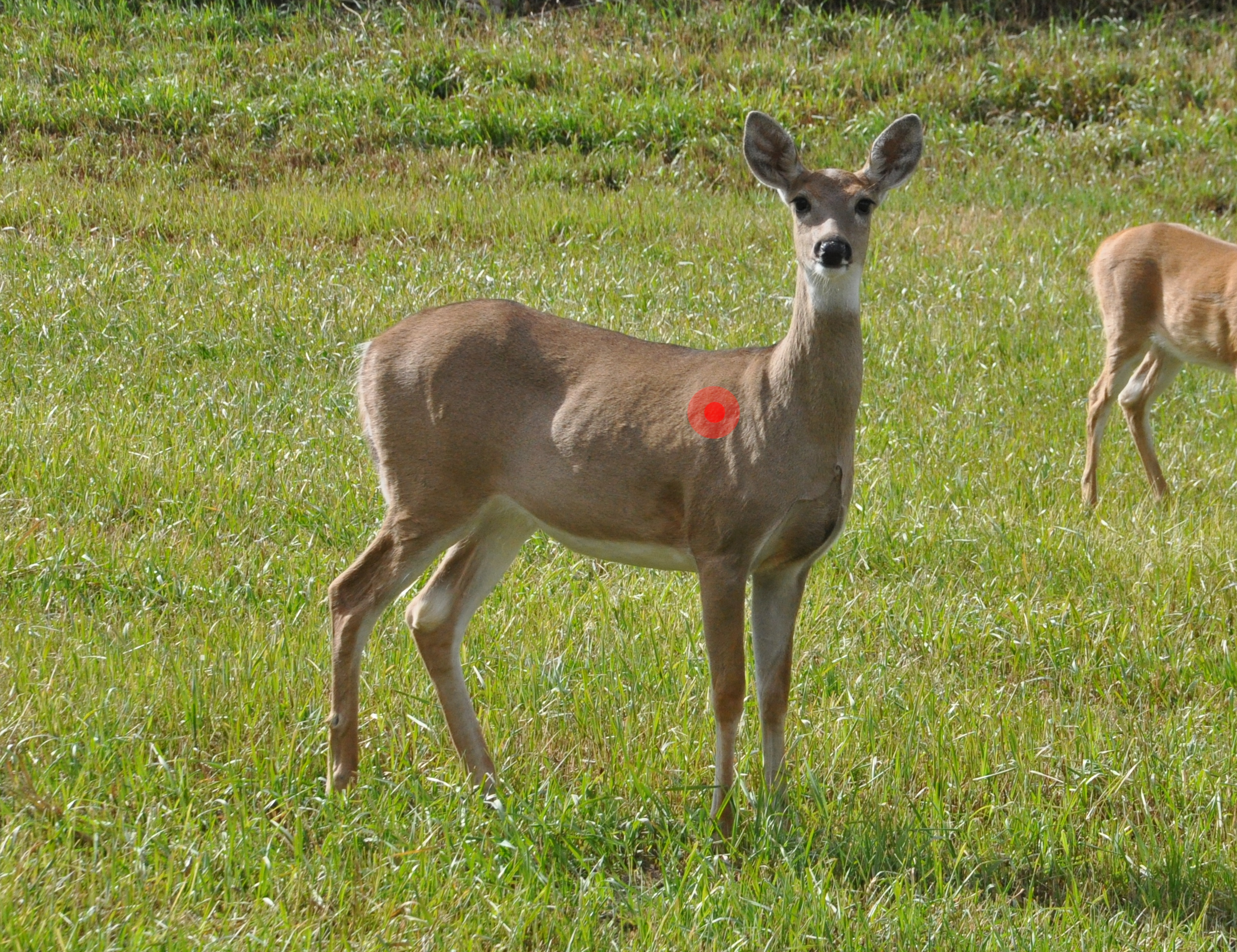
Travis Smola
I've never done this intentionally because it makes me nervous, but I can't deny its appeal. I've seen plenty of videos where it has worked. The idea behind the high shoulder shot is to limit how far it can run, while still hopefully catching a good bit of lung and some of the same blood vessels. This shot is exclusive to firearms, as an arrow won't get enough penetration. Bowhunters should stick with the first two options, as too much can go wrong otherwise.
The aim point is slightly higher and more forward than the lung shot. Properly placed, you should still catch a bit of lung and some of the same blood vessels, but you'll also likely break the scapula and possibly catch the spinal cord, which will prevent the deer from going anywhere. This does do some damage to the venison game meat, but if you don't want the wounded animal to go anywhere and you're confident in your ability to hit the shoulder shot, it's an option for gun hunters.
Neck Shot

Travis Smola
I've only killed one deer with a neck shot and it wasn't on purpose. I once had a muzzleloader bullet go wildly errant when I was aiming for the chest cavity. I still don't know what happened there. It was simply one of those odd things that happens while hunting sometimes. One thing is for sure, the doe crumpled like a house of cards and there was minimal meat loss, which is one reason many hunters take this shot. (Note that for the image above, we used a photo of a deer with another in the background. You should never shoot with another deer behind your target animal. We simply used this photo for demonstrative purposes.)
With a neck shot you're looking to either sever the spinal cord or any of the number of major arteries or jugular running through the neck. If you hit them, you will most likely have a dead deer on your hands. Most won't go anywhere, so no need for blood trailing. The downside is a deer's neck is a small target and is constantly in motion. We recommend a lot of time at the shooting range. We also do NOT recommend this shot for bowhunters ever.
We should take a moment to mention some of the other shots we've seen some articles and videos advocating out there. This includes stuff like brain shots, which I personally believe are highly irresponsible for deer hunters to even consider. These present a great chance of either blinding or causing the deer to go deaf without killing it. Or worse yet, blowing the animal's jaw clean off. This will lead to a slow, agonizing death by starvation. It's just not a high-percentage shot, or an ethical one.
I've also seen some hunters who advocate for spinal shots. But again, I feel there's a bit too much that can go wrong there. If you hit too high, you could miss the animal completely. Too low and too far back and you hit a completely non-vital area. The deer lives, gets smarter, harder to kill, and your freezer will stay bare.
If you're a newer hunter, we recommend shooting the prime target areas of the lungs and heart to start off. As you gain experience, you can try the neck or high shoulder shot. More than anything, we advocate using the shot you're most comfortable with. Remember, your goal should be to humanely and quickly take down the animal with your first shot every time.
For more outdoor content from Travis Smola, be sure to follow him on Twitter and check out his Geocaching and Outdoors with Travis Youtube channels.
